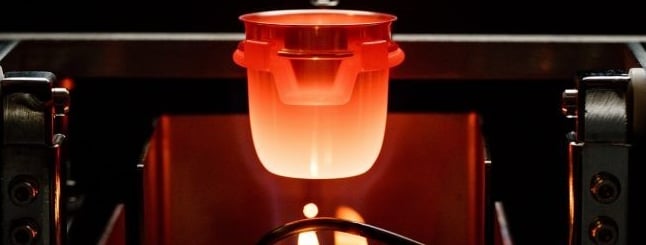X-Ray Fluorescence (XRF) for Multi-Layer Plating Thickness Measurement and Elemental Analysis on Metal and ABS Substrates
COATING THICKNESS MEASUREMENT
Nextagen Analytics
11/7/20244 min read


In modern industries like electronics, automotive, aerospace, and manufacturing, ensuring accurate measurement of multi-layer plating thickness and conducting elemental analysis is critical for product quality and regulatory compliance. X-ray Fluorescence (XRF) technology has become one of the most reliable, non-destructive techniques for measuring plating thickness and analyzing the elemental composition of coatings on both metal and ABS (Acrylonitrile Butadiene Styrene) substrates.
This article delves into the working principle of XRF, its applications in multi-layer plating and elemental analysis, applicable industry standards, and a comparison of leading manufacturers of XRF instruments. We also explain how Nextagen Analytics can assist customers in selecting the right XRF system and provide on-site support for seamless integration.
How XRF Technology Works
X-ray Fluorescence (XRF) is an analytical technique used to determine the elemental composition of materials and measure coating thickness. The process involves directing X-rays onto the sample. When these X-rays strike the atoms in the material, they cause the emission of secondary X-rays, also known as fluorescence. Each element in the sample emits X-rays at specific energies, which allows for both elemental identification and quantification.
For multi-layer coatings, XRF can accurately measure the thickness of each layer by analyzing the intensity of the emitted X-rays. This method is highly effective for coatings on metal and non-metal substrates, including ABS plastics.
Importance of Multi-Layer Plating Thickness Measurement and Elemental Analysis
Measuring multi-layer plating thickness and conducting elemental analysis is vital across many industries for several reasons:
Quality Control: Ensuring the correct thickness and composition of coatings protects the underlying material from corrosion, wear, and environmental damage.
Regulatory Compliance: Industries must meet standards such as ASTM B568 and ISO 3497, which specify the methods for coating thickness measurement and elemental analysis.
Cost Optimization: Accurate measurement helps prevent over-application of costly materials and ensures that the minimum required thickness is applied without compromising product integrity.
Performance Enhancement: The elemental composition of coatings directly influences properties like conductivity, hardness, and corrosion resistance.
Versatility: XRF can be used on both metallic and non-metallic substrates, making it ideal for industries working with plated metals and coated plastic components, such as in electronics and automotive sectors.
Applicable Standards for XRF Technology
ASTM B568: Standard Test Method for Measurement of Coating Thickness by X-Ray Spectrometry, which outlines the procedures for non-destructive testing using XRF technology.
ISO 3497: Specifies the methods for measuring the thickness of metallic coatings using XRF.
DIN 50987: European standard covering non-destructive testing for coatings on metallic substrates using XRF techniques.
Available Manufacturers of XRF Instruments
Several manufacturers provide advanced XRF technology for measuring multi-layer plating thickness and performing elemental analysis. Below is a comparative analysis of some leading manufacturers and their models.
1. Helmut Fischer Global - XRF Series
USP: Known for high precision in multi-layer coatings and micro-spot analysis.
Pros: Excellent for measuring extremely thin coatings. Capable of analyzing complex multi-layer systems.
Key Model: XDAL 600 – high-resolution measurement of thin coatings with excellent elemental analysis of coating.
2. Hitachi Hi-Tech Electronics - XRF Series
USP: Robust software with advanced analytical capabilities.
Pros: User-friendly interface with a wide range of applications. High speed and sensitivity in analysis.
Cons: Less effective on very thin layers compared to competitors.
Key Model: FT160 – Excellent for high-speed coating thickness measurement.
3. Oxford Instruments Nano-Science Instruments - XRF Series
USP: Compact, cost-effective models for a range of applications.
Pros: Affordable and portable options for on-site testing. Versatile application in a wide range of industries.
Cons: Limited to smaller samples for portable models.
Key Model: X-MET8000 – Portable XRF analyzer for fast, accurate elemental analysis.
4. Thermo-Fisher - XRF Series
USP: High-performance instruments with excellent repeatability.
Pros: Versatile for both thin and thick coating measurements. High-resolution and customizable for specific industrial needs.
Cons: Requires frequent calibration for optimal performance.
Key Model: Niton XL5 – Handheld XRF for rapid analysis and precise thickness measurement.
5. Rigaku - XRF Series
USP: High precision for laboratory use with specialized software for in-depth analysis.
Pros: Outstanding for detailed elemental analysis in research settings. Capable of handling complex substrates and coatings.
Cons: Bulkier systems, less suited for field applications.
Key Model: Primus IV – Excellent for precise measurement in industrial labs.
How Nextagen Analytics Can Help
At Nextagen Analytics, we understand that selecting the right XRF instrument for multi-layer plating thickness measurement and elemental analysis can be challenging due to the wide range of applications and substrate types. Here’s how we can help:
Expert Consultation: We assess your specific needs and recommend the most appropriate XRF system based on the type of substrate, coating, and industrial application.
On-Premise Support: From installation to training, our technical team ensures that your staff is fully equipped to operate the instruments. We also provide on-premise calibration and routine maintenance services to ensure accuracy.
Tailored Solutions: Whether you need a portable XRF analyzer for on-site testing or a laboratory-based system for research purposes, we provide customized solutions that fit your workflow.
Competitive Pricing: With access to a wide range of manufacturers, we offer competitive pricing on XRF instruments, ensuring you get the best value for your investment.
Conclusion
The X-ray Fluorescence (XRF) method for multi-layer plating thickness measurement and elemental analysis is indispensable for industries that require high precision in coating quality and compliance with stringent standards. By comparing the leading manufacturers— Helmut Fischer Global , Hitachi High-Tech Europe , Oxford Instruments plc , Thermo Fisher , and Rigaku —you can find the right XRF instrument for your specific application. At Nextagen Analytics, we not only provide expert consultation and support but also ensure that the instruments integrate seamlessly into your operations, giving you a competitive edge in quality control and regulatory compliance.
Keysource:https://www.nextagen.in/coating-thickness-measurement | Nextagen Analytics
Log into for more details or for any query : https://www.nextagen.in/reach-to-us






Innovation House
Mon-Sat 9am-7pm

contact@nextagen.in

+91 2654059388
© 2024 Nextagen Analytics Private Limited . All Rights Reserved.